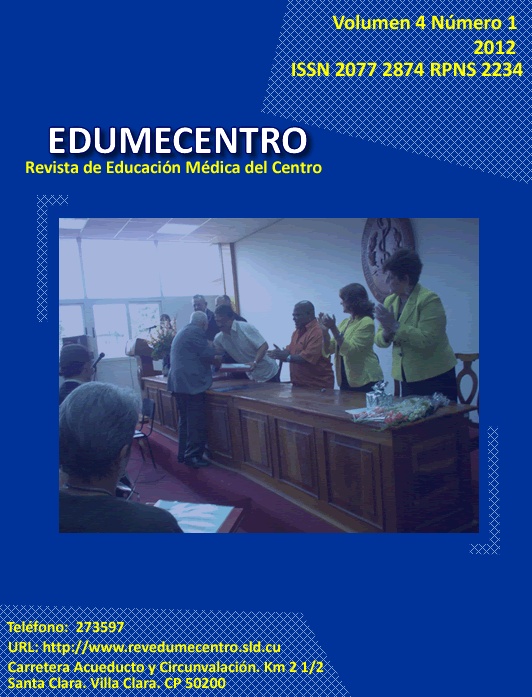Competence based curricular design. Its application to the macro-curriculum
Keywords:
Competence based curricular design, macro-curriculum, higher education.Abstract
It is very important to know about the competence based approach at present, in the late years, four important aspects should be taken into account when we assess the quality of human resources in the health branch, they are accreditation, assessment of the competence and performance, competence based formation and the academic credits. They share common points of reference, they are the professional competences. The term competence is conceptualized as well as the processes associated to it, taking into account that the identified competences are included in the professional profile. The methods to carry out this process are mentioned, the functional analysis and the elaboration of the functional map are explained and the formulation of competences. It is concluded that it is of great importance to assume the competence based approach as well as the preparation of designers and the executors of the process, the study of the topic and its application and its methodological value for the formation of the future professionals.Downloads
Download data is not yet available.
Published
2013-02-13
How to Cite
1.
Ortiz García M, Cires Reyes E. Competence based curricular design. Its application to the macro-curriculum. EDUMEC [Internet]. 2013 Feb. 13 [cited 2025 Nov. 20];4(1):10-7. Available from: https://revedumecentro.sld.cu/index.php/edumc/article/view/149
Issue
Section
ARTÍCULO ORIGINAL
License
Los autores que publican en esta revista están de acuerdo con los siguientes términos:- Los autores/as conservarán sus derechos de autor y ceden a la revista el derecho de primera publicación de su obra, el cuál estará simultáneamente sujeto a una Licencia Creative Commons Reconocimiento-NoComercial-CompartirIgual 4.0 Internacional (CC BY-NC-SA 4.0) que permite a terceros compartir la obra siempre que se indique su autor y su primera publicación esta revista.
- Los autores pueden establecer por separado acuerdos adicionales para la distribución no exclusiva de la versión de la obra publicada en la revista (por ejemplo, situarlo en un repositorio institucional o publicarlo en un libro), con un reconocimiento de su publicación inicial en esta revista.
- Se permite y se anima a los autores a difundir sus trabajos electrónicamente (por ejemplo, en repositorios institucionales o en su propio sitio web) antes y durante el proceso de envío, ya que puede dar lugar a intercambios productivos, así como a una citación más temprana y mayor de los trabajos publicados (Véase The Effect of Open Access) (en inglés).










